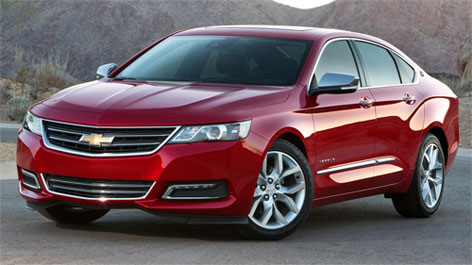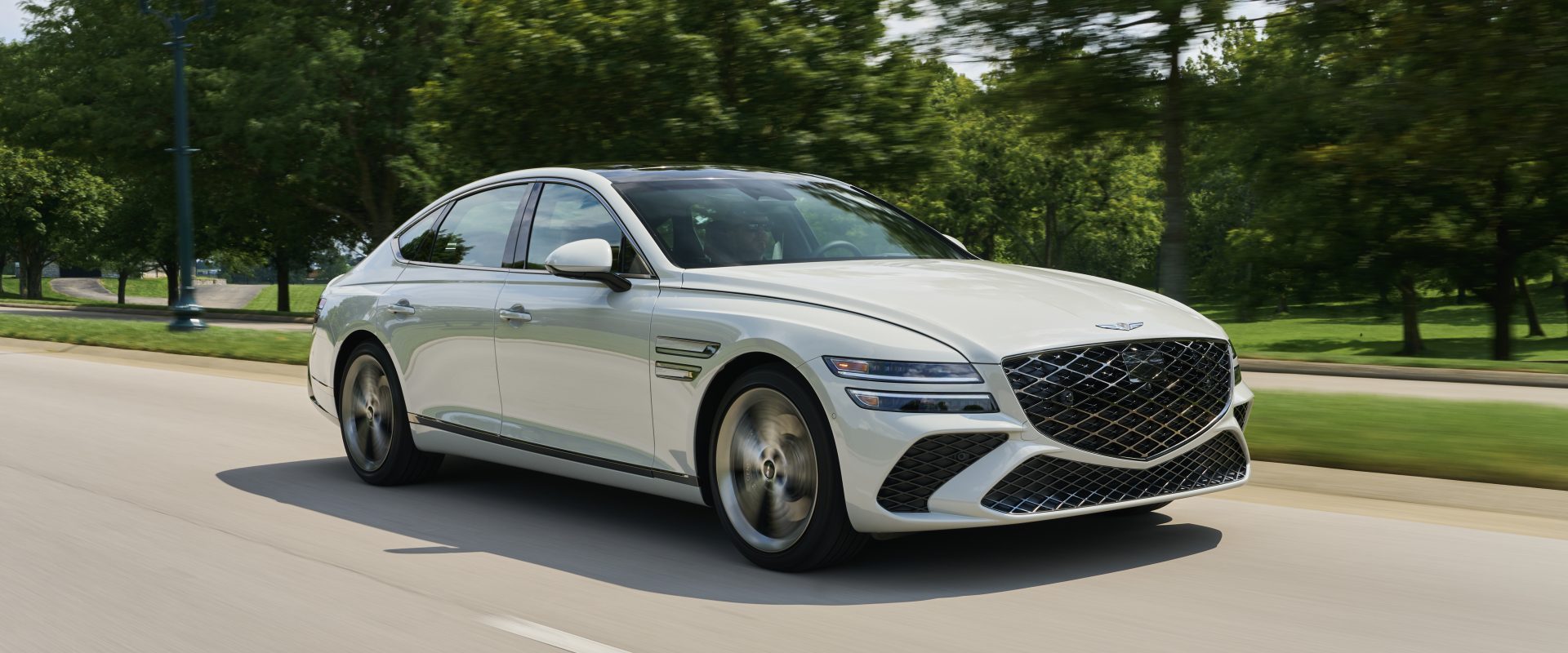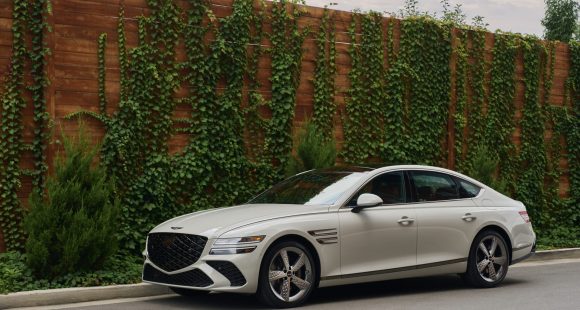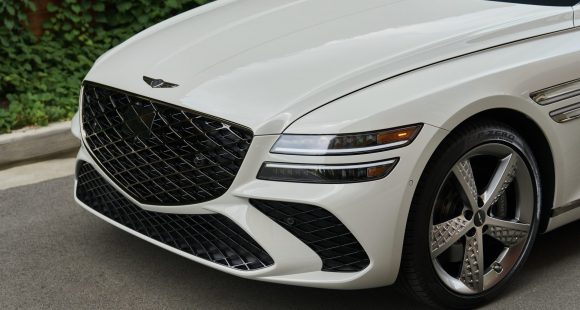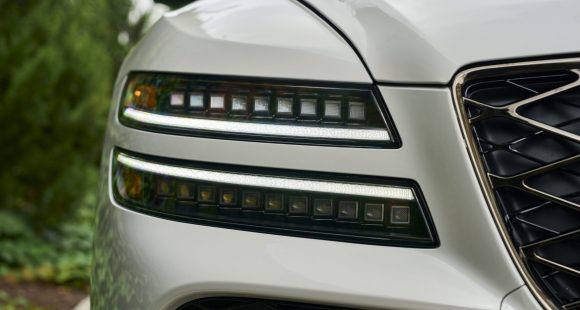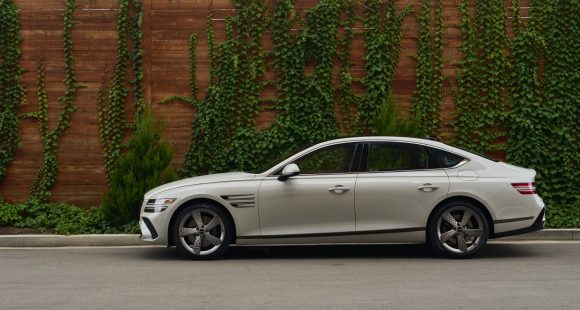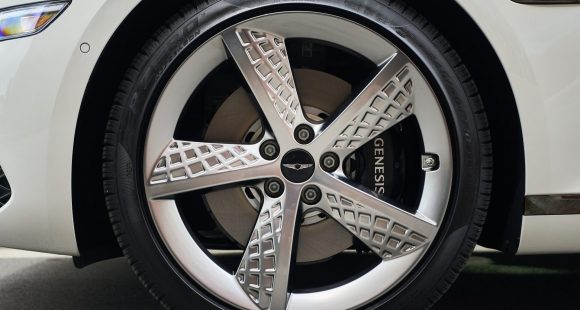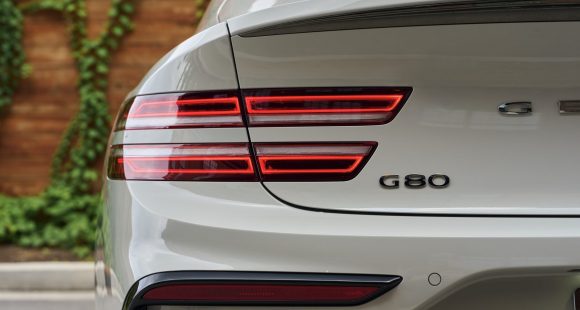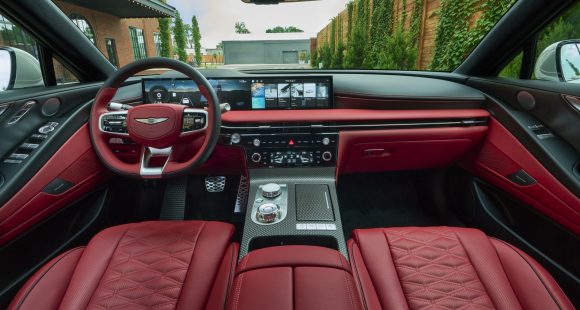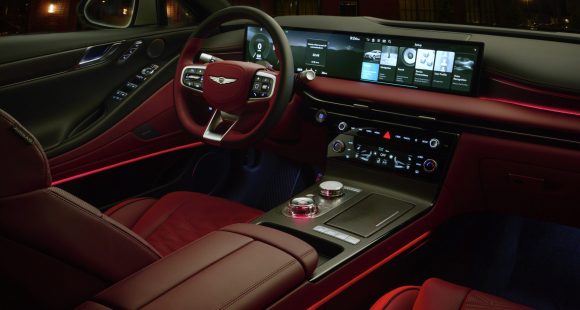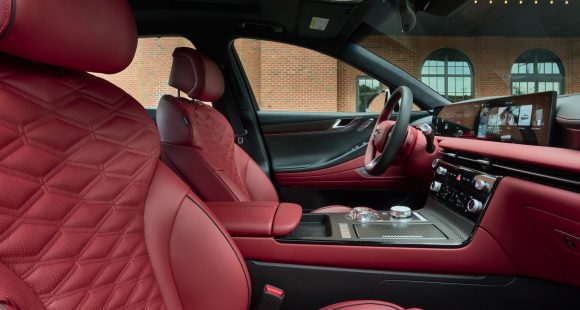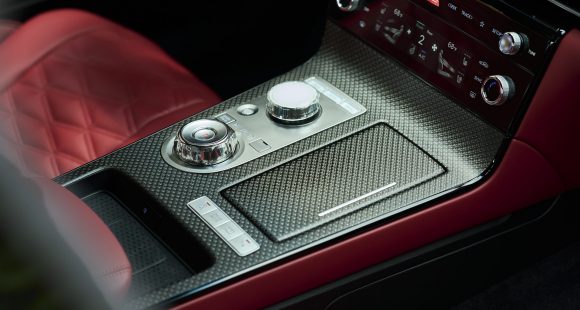2014 Chevrolet Impala
The Chevrolet Impala name hasn’t exactly sparked much excitement in a very long time, despite circling NASCAR’s high banks. But that’s about to change, along with just about everything else that has to do with the Impala nameplate. So let’s see if Chevy’s new full-size sedan can generate some full-size enthusiasm, along with more sales.
It’s not that Chevrolet Impala sales have been that bad. It’s long been GM’s best-selling car. But, some 70% of the previous Impala went to fleet sales. That says a lot about a car when 7 out of 10 people who drive it are forced to do so. Chevrolet is looking to change that with the 2014 Chevrolet Impala.
One look tells us they’re off to a good start as the sweeping styling is a whole heck of a lot better looking than any Impala since the 60’s. It’s ready to slip through the air like a dream thanks to a big emphasis on aerodynamics.
You can clearly see some Camaro influence, naturally, particularly in the grille, tail lights, and the power dome hood. But this is no retread, as it has its own sleek proportions; similar to the Cadillac XTS with which it shares a lot; and unique details right down to the Impala on the C-pillar.
Top LTZ trim adds HID headlights and LED daytime runners. 20-inch alloys are optional, replacing the LTZ’s standard 19’s. Base Impalas still get beefy 18’s. Our test Impala rolls with V6 power; GM’s familiar direct-injected 3.6-liter with 305-horsepower and 264 lb-ft. of torque. A pair of I4’s are also available, a 195-horsepower 2.5-liter and a 182-horsepower eAssist light-hybrid.
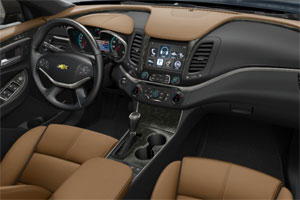 Nearly every interior dimension has grown. There is the full-size room you expect. So, it’s 5-passenger road-trip comfort for all, plus room for 18.8 cubic-ft. of luggage in the trunk, before you fold the rear seats. There’s plenty of smaller item storage; under the trunk floor, in the doors, and even behind the cool fold up touch screen.
Nearly every interior dimension has grown. There is the full-size room you expect. So, it’s 5-passenger road-trip comfort for all, plus room for 18.8 cubic-ft. of luggage in the trunk, before you fold the rear seats. There’s plenty of smaller item storage; under the trunk floor, in the doors, and even behind the cool fold up touch screen.
The dash has Chevy’s twin-cockpit overtone, and materials are consistent with recent GM’s; actually a little better. Things are much quieter than the previous Impala, and Chevrolet’s voice-prompt MyLink keeps all copacetic on the connectivity front. Gauges look very modern with a 4-inch changeable info screen set between the classic dual dial setup with “ice blue” lighting. Heated and ventilated seats are available for both in front, as is a heated steering wheel for the driver. 10-airbags are standard, and adaptive cruise control with forward collision alert and collision mitigation braking are available.
Ride is much improved, thanks to a stiffer chassis and hydraulic ride bushings; but it’s not necessarily sportier, which is to say it has a much more solid feel, but not one that encourages aggressive handling maneuvers, as we found out through our handling course. Though we also found body roll well subdued for a full-size sedan and the variable-assist electric steering quick and direct. Stability control was a little too fast on the trigger to reign in our high speed maneuvering; but we understand that most buyers will appreciate that safety aspect.
Keeping the hammer down in a straight line, the V6 roars to life and lays down a decent 0-60 time of 7.1-seconds and ¼ mile time of 15.6-seconds at 93 miles-per-hour. Not sport sedan territory by any means, but certainly up to the task of highway merging. Gear selection is by a 6-speed automatic, and it provided smooth and relatively quick shifts down the track. Hitting the brakes at 60 miles-per-hour resulted in stops that were very stable and consistent with a short 127-foot average.
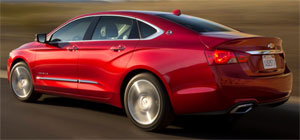 Government Fuel Economy Ratings for the V6 are 18-City, 28-Highway, and 21-Combined. We averaged a very good 23.3 miles-per-gallon of Regular in mixed driving. Still, the Energy Impact Score is an average one, at 15.7-barrels of oil consumed yearly, with CO2 emissions of 6.9-tons.
Government Fuel Economy Ratings for the V6 are 18-City, 28-Highway, and 21-Combined. We averaged a very good 23.3 miles-per-gallon of Regular in mixed driving. Still, the Energy Impact Score is an average one, at 15.7-barrels of oil consumed yearly, with CO2 emissions of 6.9-tons.
Impala pricing starts at $27,535, that’s good for the amount of space and features you get. With high trim and a V6 going past 35K is easy, not unlike main rivals: Ford Taurus and Toyota Avalon.
While full–size sedans are no longer high volume models, they are still seen as brand flagships. And, the 2014 Chevrolet Impala certainly qualifies as a retail flagship, breaking the fleet image it has endured for years. It is a high styled, high quality effort that befits GM’s largest division. With so many big four doors redesigned recently, the full-size turf wars are tougher than ever. But, we think the new Impala is more than up to the challenge.
Specifications
- Engine: 3.6-liter
- Horsepower: 305
- Torque: 264 lb-ft.
- 0-60 mph: 7.1 seconds
- 1/4 mile: 15.6 seconds at 93 mph
- EPA: 18 mpg city/ 28 mpg highway
- Energy Impact: 15.7 barrels of oil/yr
- CO2 Emissions: 6.9 tons/yr
2025 Genesis G80
New Interior And New Tech Elevates G80 Sedan
Talk about bad timing. This second-generation G80 debuted at the height of a global pandemic. But that hasn’t stopped Genesis or this Bentley-on-a-budget sedan. In fact, since then, Genesis has unveiled a spectacular all-electric version and now given all G80s a makeover. So, let’s find out what a better and better-timed new G80 is ready to deliver.
Breaking into the luxury sedan scene requires going up against traditional brands with long pedigrees and legions of loyal buyers. But Hyundai has never shied away from a challenge, and has made steady progress with their Genesis brand, and hopes that a revised 2025 G80 midsize sedan will be their next step up.
Styling matters more when you’re the upstart, and the Genesis Athletic Elegance theme changes very little for ’25; just a new grille, slightly reshaped bumpers, new wheels ranging from 18 to 20 inches, and an updated color palette. The G80’s unique two-line LED headlamps get revised Micro Lens Array technology that boosts performance while minimizing the brightness for oncoming drivers.
Changes inside are much more significant with an entirely new dash and console, eliminating both the hooded gauge panel and dashtop wide info screen. Merging them together into one 27-inch wide LG panoramic display than runs from behind the steering wheel to over the center stack. There’s a bigger and more comprehensive control panel in the center stack; while the console gets less armrest coverage, more space for storage, and reshaped cupholders. The wider display is still a touchscreen, but there is also a console mounted controller if you prefer to keep it fingerprint free. Both options work well, but the controller is still too easy to confuse with the dial-like shifter.
Materials are on par if not a notch above most European luxury rivals, and there are 18 speakers to crank out 1,400 watts of premium sound from Bang & Olufsen. Top Sport Prestige trim comes with Nappa leather seats, carbon fiber trim, micro-suede materials for the headliner and pillar covers, heated armrests, head-up display, and upgraded active safety features. Front seats are immensely comfortable without feeling overly soft, and there’s plenty of comfort and room for adults in the back seat.
More Bentley than Benz; streaking down the track with European-style solidity that gives you very little indication of the high speed you’re traveling at.
Same powertrains as last year. Base power comes from a 300-horsepower 2.5-liter turbo-four; the upgrade is this 3.5-liter twin-turbo V6 that outputs 375 horsepower and 391 lb-ft of torque. Both are hitched to standard all-wheel drive. At our Mason Dixon Dragway test track, the AWD delivered enough grip for consistent slip-free launches. We hit 60 in 5.0 seconds flat. Run after run, the 3.5T pulled as strong as it sounds. All G80s work with the same paddle-shift eight-speed automatic transmission, and while shifting was silky smooth on the street, here on the track with Sport Mode and wide-open throttle they were noticeably firmer and quicker.
It was a very surreal experience in the cabin. More Bentley than Benz; streaking down the track with European-style solidity that gives you very little indication of the high speed you’re traveling at. For us, that was 105 mph in 13.4 seconds at the quarter. In addition to the G80’s Sport Mode that tightens steering, improves throttle response, adjusts shifting points, firms up the suspension, and reconfigures stability system parameters; Sport Prestige trim adds rear-wheel steering and an electronic limited slip differential. But, even with all of that, it didn’t feel overly sporty in our handling course. Now, we were able to comfortably carry quite a bit of speed through the cones, but there was just an overall soft, somewhat disconnected and heavy presence that had us unsure of how hard we could push. Sport Prestige also adds upgraded performance brakes. They were plenty capable, bringing this 4,600-lbs. luxury liner consistently down from 60 in just 104 feet with little fade.
Government Fuel Economy Ratings for the six-cylinder are 16 City, 24 Highway, and 19 Combined. We averaged a good 21.3 mpg of Premium. Still, that’s a slightly below average Energy Impact Score, using 15.7 barrels of oil annually with 7.8 tons of CO2 emissions.
Considering the amount of luxury packed into the G80, its $58,350 starting price, even though slightly higher than last year, remains pretty remarkable. It’s a substantial step up to the 3.5T though, as it begins at $70,850.
Genesis has existed as a standalone luxury brand for just less than a decade, and it has indeed been making steady progress into what is surely the hardest segment of all to master. The 2025 Genesis G80 sedan continues to impress and is a great option for luxury-minded buyers who prioritize true value over badges.
Specifications
As Tested
- Engine: 3.5-liter twin-turbo V6
- Transmission: eight-speed automatic
- Horsepower: 375
- Torque: 391 lb-ft
- EPA: 16 City | 24 Highway | 19 Combined
- 0-60 mph: 5.0 seconds
- 1/4 Mile: 13.4 seconds at 105 mph
- Braking, 60-0 (avg.): 104 feet
- MW Fuel Economy: 21.3 mpg (Premium)




